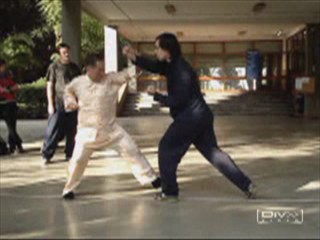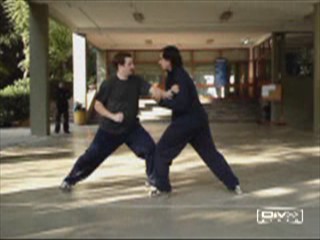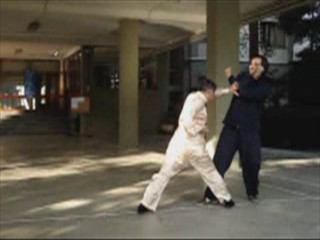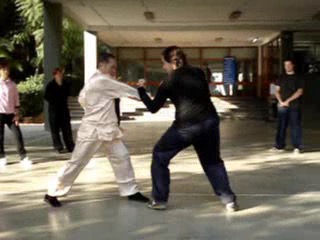ONE-STEP, TWO-STEP OR MULTIPLE-STEP CHASE
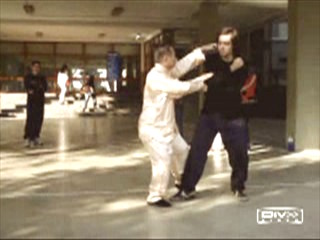
How you chase after a Boxer if he attempts to bounce away
Depending on how far away an opponent retreats, your pursue can be a one-step, two-step, three-step or multiple-step chase. You should also chase according to his retreating direction, sticking to him like glue but covering him so that he cannot counter-attack you.
It is your strikes that chase after your opponent; your footwork provides the right spacing. Understandably, you may be slow and hesitant initially, but with systematic training your chasing movement must be fast and spontaneous.
You can refine both the smoothness of your movement and the extent of your reach by using appropriate stances. The three main stances are False-Leg, Bow-Arrow and T-Step, which will bridge the space between you and your opponent by half a step, one step or one and a half step respectively. The transition from one to another of these stances makes your movement to be smooth
One-Step, Two-Step or Multiple-Step Chase in Shaolin Kungfu from Wong Kiew Kit on Vimeo.
- From Shaolin to Instinctive Fighting to Boxing
- Basic Counters against a Boxer's Jabs
- Chasing after a Boxer's Retreat
- One-Step, Two-Step or Multiple-Step Chase
- Practicing on your Own, then Testing it on your Partner
- Counters against a Boxer's Left Jabs
- Handling Unexpected Attacks Correctly and Spontaneously
- Progressing to Realistic Sparring with a Boxer
- Employing Appropriate Tactics to Defeat a Boxer
- Sticking to a Boxer as he Tries to Bounce Away
- Advantages of the Bow-Arrow Stance over a Boxer's Footwork
- Practicing Numerous Tactics against Boxers
- Handling a Boxer Competently despite his Speed and Size
- Understanding and Implementing Techniques, Tactics and Skills against Boxers
- Countering the Left-Left-Right of Boxers
- Kick a Boxer Whenever he Uses his Right Hand
- Various Tactics to Handle a Boxer
- Attacking a Boxer with a Planned Sequence
- Felling an Opponent as he Attacks with an Undercut
- Various Ways to Fell an Opponent
- Knee Strikes and their Counters
- From Simple Techniques to Sophisticated Patterns
- Why are many Kungfu Practitioners Unable to Counter Muay Thai or Kick-Boxing Attacks?
- Superiority of Kungfu Stances, Footwork and Techniques
- Counters against Muay Thai and Kick-Boxing Attacks
- Effective Tactics and Techniques against Continuous Attacks Mixed with Feint Moves
- How do you Counter Continous Kicks?
- Exploiting the Innate Weaknesses of Kicks to Counter Them
- Throwing an Opponent as he Kicks
- Striking the Attacker as he Attempts a Shoot
- Countering the Shoot when an Attacker has Grabbed you or Pushed you onto the Ground
LINKS

